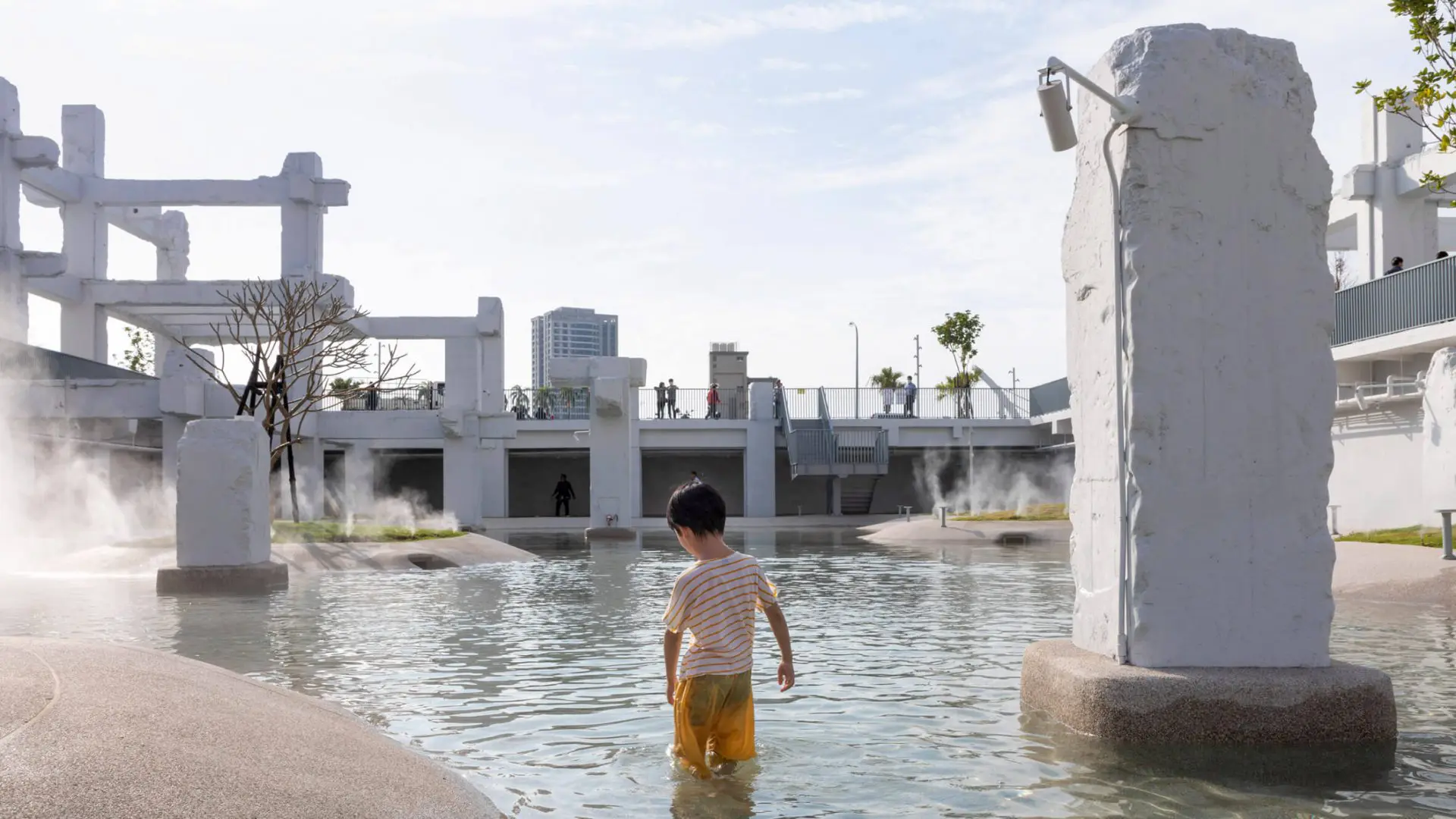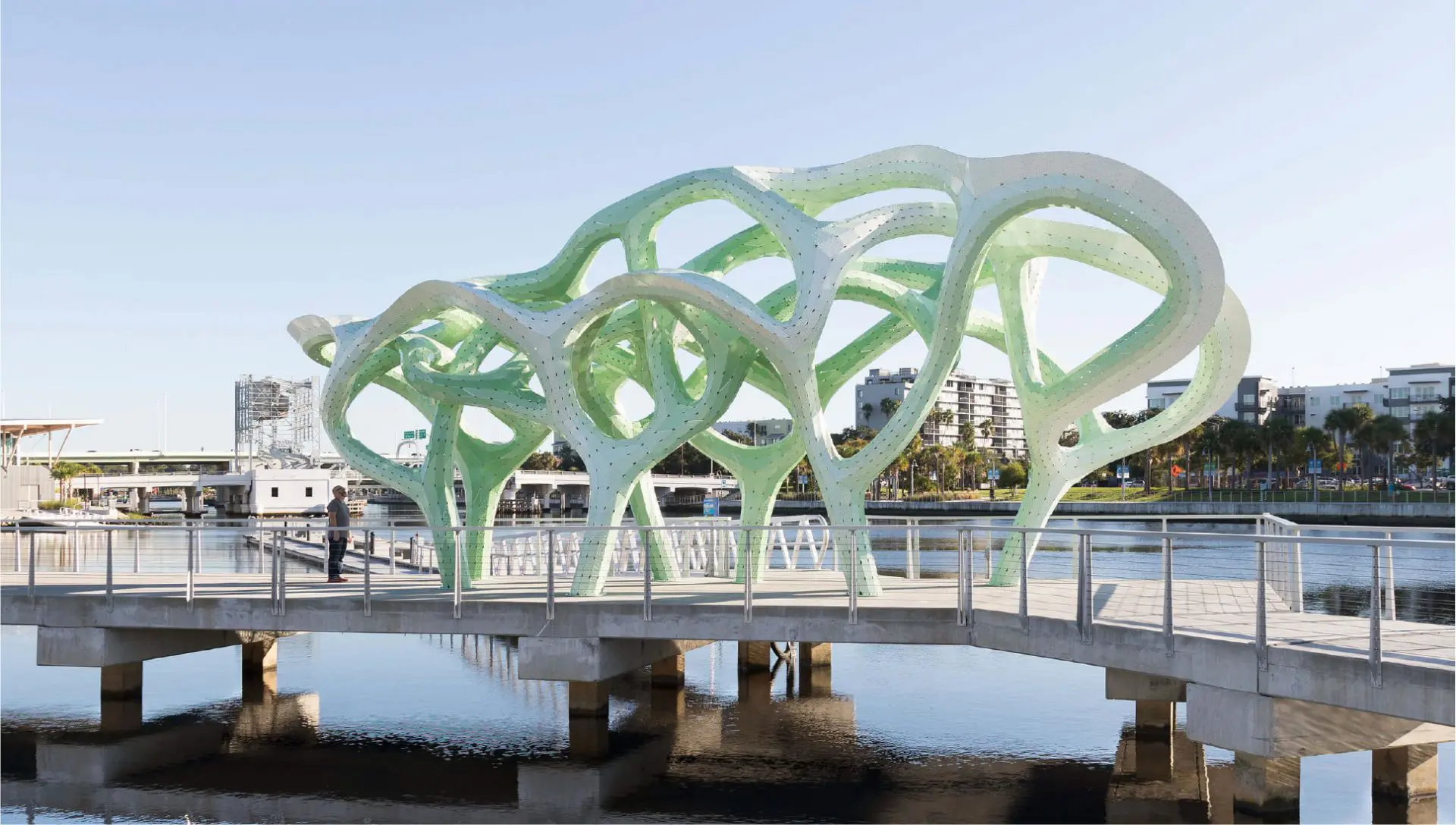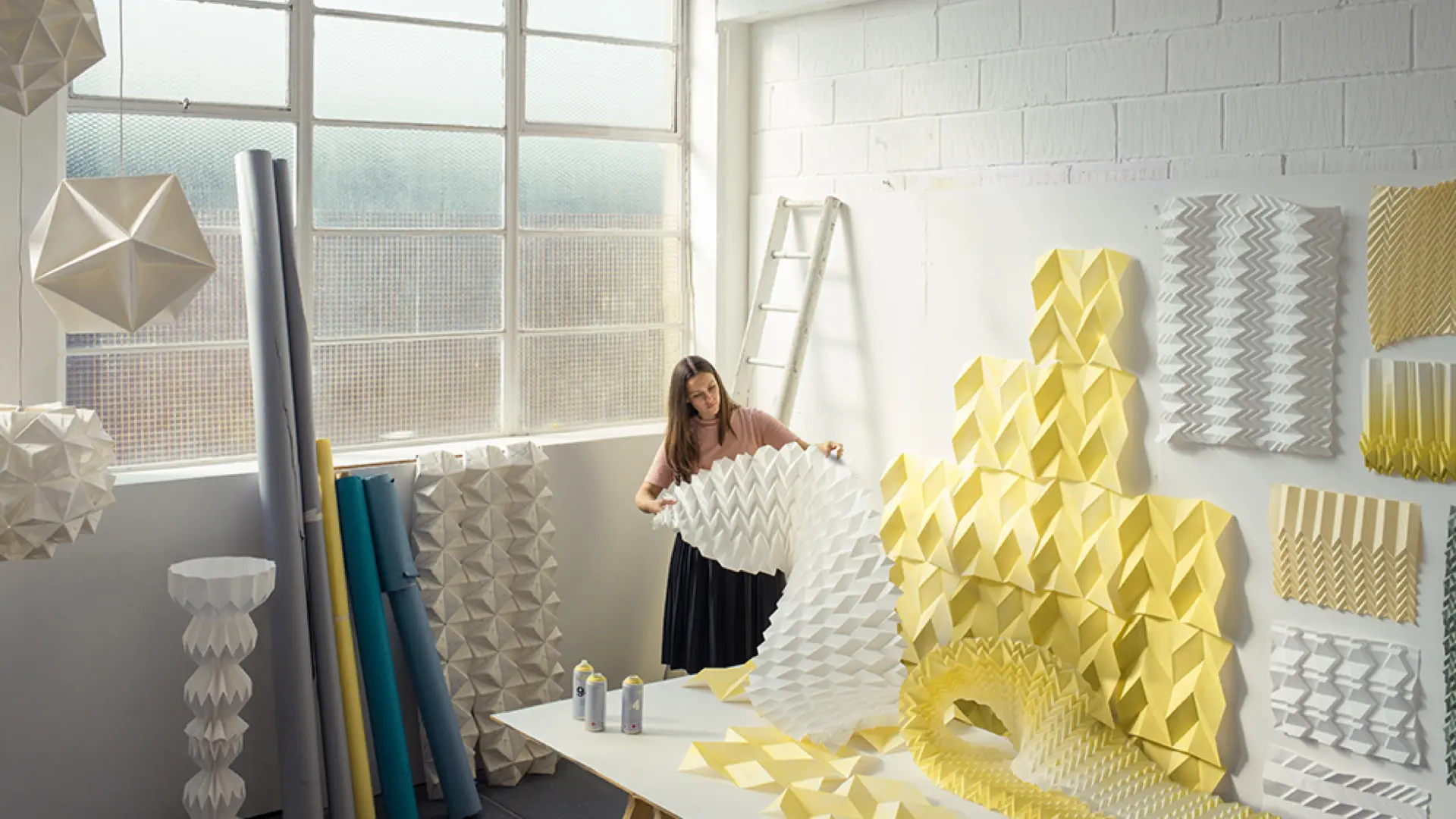From visual merchandising and retail to live music and stage design
In a conversation with the team of UK based studio Architecture Social Club, we seek their ultimate purpose, investigating on what moves them to design and realize mesmerizing large scale installations for varied contexts.

From visual merchandising and retail to live music and stage design, kinetic installations and immersive spaces, the works of Architecture Social Club show us how a strong vision and a flexible structure can lead to a hypnotic variety of creations.
In the collective spirit behind this company lies the value of their works, where a combination of backgrounds beautifully blends giving birth to installations that use light and unconventional materials to create unexpected reactions in the viewers. We had the chance to talk with the people behind Architecture Social Club to explore the story and inner vision of this ambitious team.
Who is part of Architecture Social Club? How did it all begin?
Satyajit Das:
“Architecture Social Club is a multidisciplinary collective of creatives. Within our team, we have key individuals that shape the way the studio operates. This includes Jennifer, who coordinates the delivery of our projects and research, Claudia, who manages the design development and coordinates the design team, and Alex, who develops new partnerships for projects. We also work collaboratively with a large family of specialists and an active project, it can be typical for our team to expand from 5 to 20 by the time the piece has been made.

I’m the Creative Director and Founder of the studio. I trained at the Royal College of Art and Cambridge University before working at Sir Norman Foster’s studio. Architecture Social Club started off as a collection of the best creatives I had met throughout different parts of my career. Looking back, I realise this was a subconscious response to when I was working in architecture.
Much of my job lacked enough expression and experimentation, and it involved working under sophisticated but large, hierarchical systems, which didn’t really feel right for me. This was a great learning experience at the time, but I felt that it was a temporary part of my journey. I wanted to create a flatter creative structure and a sense of belonging, while also experimenting and working with a wide range of skill sets, talents, and projects. I find that having an ongoing and open dialogue with makers, engineers, artists, and more, is where the magic happens for us, and the world of installations has allowed for this kind of expression.”
Why focus on experience and installation design?
Satyajit Das:
“For me, this is where my two worlds meet – music and architecture. When I was younger, I spent a lot of my time promoting electronic music gigs. That culture formed a large part of who I am today. My following years at the RCA heavily influenced my thinking about architecture. I was introduced to the idea that architecture could and should tell a story, and had more cultural value than just a simple function. I see these experiences and installations as a concentrated dose of this ethos. A powerful way to tell stories whilst creating spaces of escapism and joy.”
Jennifer Sin:
“I’ve always been interested in visual art and forms of performance like film, music, and theatre. My background isn’t formally in architecture or design, so I was really drawn to Architecture Social Club’s work, as it combined performance with spatial interventions. There is a sense of playfulness, which I think is really lacking in the world of contemporary art and design, and a genuine interest in telling stories, which is important when creating any work in the ‘experiential’ world, or anything really.”
Claudia Cortes:
“Humankind as a species has been in the constant quest to create magic with the purpose of amusement. Nowadays this practice still possesses an extensive influence in the fields of architecture and entertainment. I think of wonder as the emotion that helps us to create memories. This combined with my background in architecture has led me to believe that through spatial installations we can design unforgettable experiences for audiences.”
Which are the main values, core concepts or style inclinations that, above all, will always represent Architecture Social Club?
Satyajit Das:
“Our projects lie very much in spatial design and there is generally a tangible structural element to our work. Even Aether, a light-based installation, has a physical presence. Our deeper agenda comes from a desire to be able to contribute positively to society, whether it’s telling a valuable story or experimenting in new methods of fabrication.
As a studio, we research topics that are meaningful to us and use these installations and experiences to further explore and understand them. Research and experimentation form the key foundation of our approach. This often involves asking questions whilst designing. What is our message? Is what we’re learning valuable? Can we build knowledge, techniques, and tools that can be useful for wider use?”

Jennifer Sin:
“Our projects are very diverse and rarely end up looking like one another, but the creative process is always the same. We let the research guide the development of a concept or narrative. Our collaborative and interdisciplinary approach also means that we have access to a vast range of knowledge and skillsets within our team.”
Alex Clapworthy:
“There’s a strong feeling within the studio that we would like to work towards a higher purpose with the artwork and installations that we create. There’s never been a more relevant time to stop and think about the impact of our actions on the world around us, we hope that through architecture, design and responsible project management we can help contribute towards a sustainable future, whether that be through what you might think of as benevolent problem solving or just making the world around us a more pleasant and beautiful place without negatively impacting the existing environment.”
What kind of feeling do you aim to evoke in your audience? Do they always react as you expected?
Satyajit Das:
“This depends on the project, but it’s always an amazing feeling to see audiences transfixed by our work. When Aether was shown at Lumiere London, there’s a video of a young boy who is completely mesmerised by the installation. Moments like that are really satisfying. We also brought Aether to Hasselt and I remember seeing a fragile older man with a walking stick enter this dark, loud, environment we had created, then leaving shortly afterward looking completely overwhelmed by the intensity of the sound and visuals. So, every now and then, we don’t always get quite the reaction we expect.”
Jennifer Sin:
“I like the idea of mystifying audiences, where they come away not quite sure of what they saw, but curious to see more.”
Satyajit Das:
“I’m always amused by the amount of complex techniques and technologies we have developed behind the scenes. The most successful outcome is when this is invisible and just used to create the experience.”

You research, design and experiment with new techniques and methods that you later infuse into your work. What other fields and inputs, inside and outside of the design world, provide you inspiration?
Satyajit Das:
“We’re really inspired by the research we do early on in the design process, which I think is something that feels unique to us. The topics are either self-generated or through mutual interests in collaboration. Our aim is to find that special thread that captures our attention. We’ll then gently pull on that thread and see where it leads us. It’s quite often to unexpected places, but this journey retains a creative and conceptual core value which ultimately makes an intervention or experience more valuable.”
One of your latest projects Aether 2.0 is a multi-sensorial immersive experience that tells a story about human endeavor, developed with electronic music DJ and producer Max Cooper. Can you tell us how this project came to be and the inspiration behind it?
Satyajit Das:
“Max and I met in university, where he was studying genetics and I was studying medicine, and we shared an enthusiasm and fascination with club music. His career led him down a music path and mine eventually focussed on aesthetics and visuals. We had worked in music together and when Lumiere came about, it made sense for us to collaborate on an emotive visual instrument. Through a series of experiments and iterations, Aether was born!”

Unlimited budget, unlimited resources: what is the project Architecture Social Club would develop? What would it look like?
Satyajit Das:
“Our dream scenario would be to build an extensive workshop, both physical and digital, with all the best talent in one place. A playground where art and design can be realised with no limits on ambition or scale.”
What is the next step for Architecture Social Club?
Satyajit Das:
“I think this time has been remarkable for everyone on Earth. It’s been very challenging running a studio where many of our projects involved a lot of travel. But the difficulties caused by this period have also challenged us to adopt new ways of thinking and we are now re-envisioning what our skills can provide moving forward. We are developing some of our long-term research agendas in fabrication techniques, building some machine learning tools, and exploring how to connect our physical spatial experiences to the digital.”

Jennifer Sin:
“We have also been working on some proposals for different installations – some light-based, some interactive – that we hope to launch this year or next. Recently with the COVID-19 crisis, we have been focusing more on design as opposed to fabrication, and it’s certainly influenced the way we work on projects.”
Alex Clapworthy:
“We’ve spent a lot of time considering our future. In February, we were in South Africa, where Satyajit gave a keynote at Design Indaba. We met a lot of inspiring designers working on all aspects of design and solving problems around the world. On the way home, we spent a lot of time talking about our aspirations, skill sets, and how we can refocus our attention back on our long term research goals. That conversation coupled with the inevitable total shutdown that the COVID-19 outbreak forced upon the world, lead us to re-examining how to make a deeper research agenda part of a sustainable business plan for the future and the social impact this can bring.”

Satyajit Das:
“Our work and studio aim to bring innovation, meaning, and positivity into our communities. The vehicles through which we do this will always adapt and evolve – it could be through beauty, storytelling, or tackling relevant design issues of today. I believe that’s the power of being part of a collaborative team and that’s ultimately what Architecture Social Club is about.”









